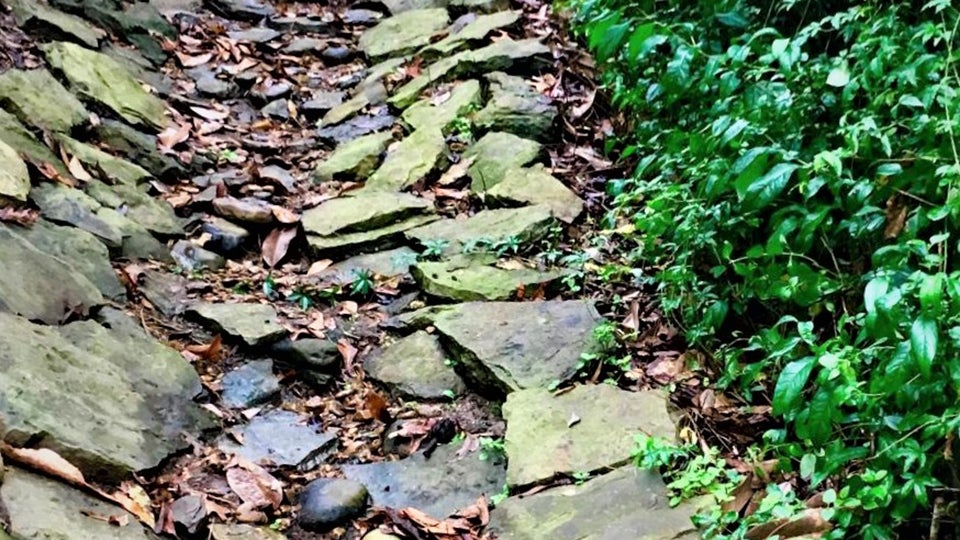Dealing with landscape drainage issues
Published 1:00 pm Sunday, February 13, 2022

- Photo by Felder Rushing Dealing with landscape drainage issues
My son’s landscape has drainage problems, and because I have some of the same issues we’re helping each other. And we’re not alone, as many other gardeners in our climate have problems with muddy areas from heavy rainwater that doesn’t drain away quickly.
Sometimes it’s just footpaths or dog trails worn into mud trails; but even folks who grow plants in containers have to set them atop clay “pot feet” or small rocks or smashed beer cans to get them off the patio or deck to reduce stains and wood decay.
And many folks who’ve had trees removed are surprised to discover within three or four years that the now-rotted trunks and decayed thigh-thick roots leave holes the same size and shape. To match the surrounding soil, they eventually fill them with real dirt, not sand or compost.
When I had a little cabin built in my backyard I placed flagstone and concrete basins all the way around, sloped so water would splash and flow away. This is how they do all buildings in rainy England, where water issues are seen less of a problem, more just a part of life. Even the sidewalks are sloped towards drainage tiles, often right in the middle.
But Ira’s place is on a hillside that had the naturally-draining topsoil scraped away, creating a flat clay field that holds water for days. There are French drains close to the house to get rainwater away and in a couple of other spots where water collects and stands for days on end, and we’re working on planting liriope, ivy, Asiatic jasmine, and other evergreen groundcovers where erosion is setting in around the edges.
By the way, a French drain is a concept, not a complicated recipe. Bells and whistles aside, it’s just one or more bathtub drain holes covered with something to keep dirt and leaves from clogging it up, and pipes leading to someplace lower and farther away. Lots of different approaches, including various ways to collect the water in sunken boxes, ground-level gutters, or perforated pipes wrapped in permeable fabric and buried in gravel.
But the idea is the same: Gotta help water move more or less quickly to a spot even lower, preferably off the property. Same principle as storm drains in the street.
But there are other simple, effective approaches that are sometimes easier for large areas. Often a combination of two or more works best.
One is to just slow the water down with terracing, in which one or more areas is higher than the others and separated with a slope or wall made of rocks, bricks, wooden boards, or even small logs and big branches. Monkey grass and other ground covers further slow the water.
Second option, really effective in large areas, is a combination swale and berm. The former is ditch-like, only wide and shallow, even mow-able, usually several feet or yards across and barely a few inches deep in the middle. A swale is a low, wide built-up area, not a steep levee; usually the little dirt dug out of a wide swale is enough to create a low berm, a just-right solution that’s not an eyesore. Upscale designers often line small swales with landscape fabric and flat rocks as temporary “dry creek” waterways.
A third option is a “rain garden” — a shallow dry pond where water can flow into and settle for a few days, usually with attractive “ditch” plants that tolerate alternate wet/dry periods (search for the great list of them at MSUCARES.com).
We’re working on some of all the above. Plus the pot feet.
Felder Rushing is a Mississippi author, columnist, and host of the Gestalt Gardener on MPB Think Radio. Email gardening questions to rushingfelder@yahoo.com.





